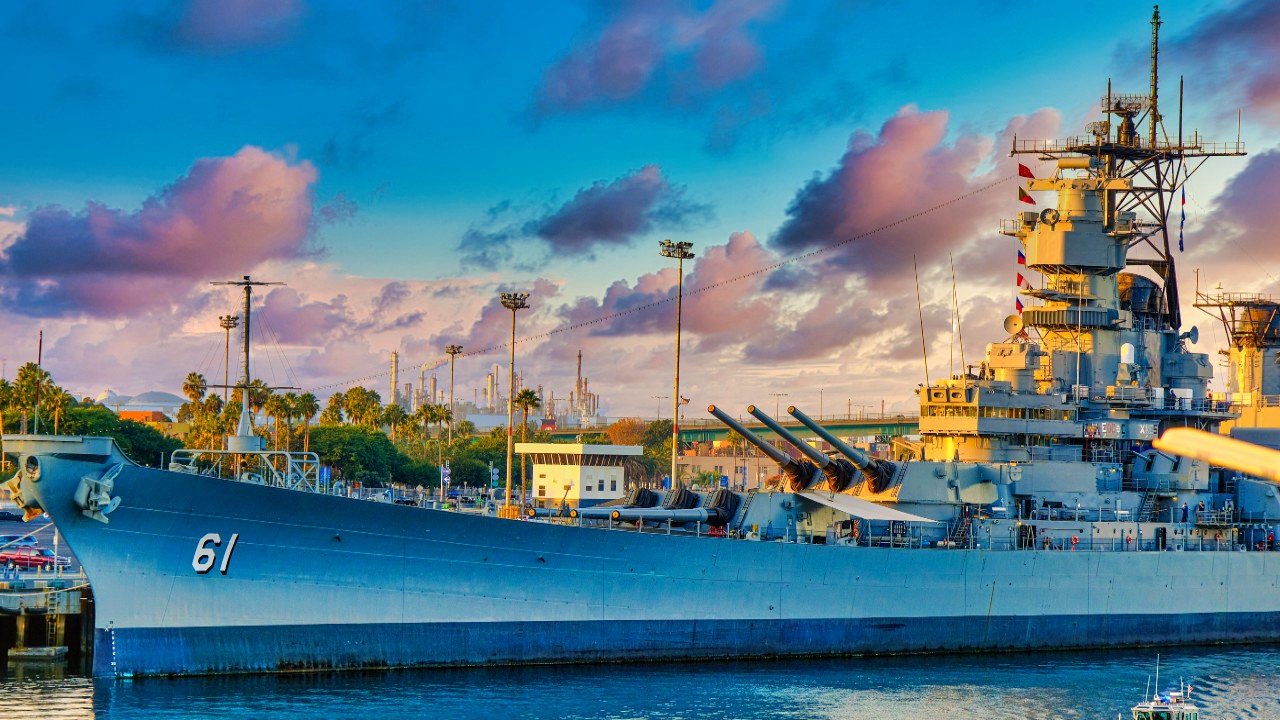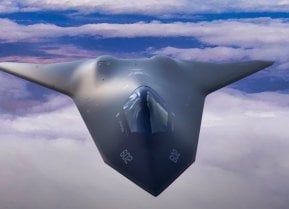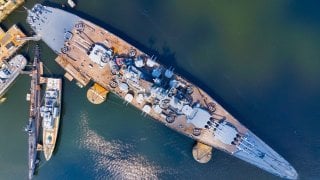U.S. Navy Iowa-Class Battleships Could Have Fired Nuclear Bomb Shells
By the end of World War II, advancements in military technology rendered traditional battleship guns less decisive. In response, the U.S. Navy explored arming its Iowa-class battleships with nuclear artillery shells known as "Katie" (Mk 23) shells in the 1950s.
Key Points from this Article: By the end of World War II, advancements in military technology rendered traditional battleship guns less decisive. In response, the U.S. Navy explored arming its Iowa-class battleships with nuclear artillery shells known as "Katie" (Mk 23) shells in the 1950s.
-These 16-inch nuclear shells had yields comparable to the bombs dropped on Hiroshima and could be fired from the battleships' existing guns without modification.
-Approximately 50 such shells were produced, and storage modifications were made on three Iowa-class ships. While it's unclear if these battleships ever carried the nuclear rounds during active service, all Mk 23 shells were withdrawn by 1962 without ever being used in combat.
From Big Guns to Nuclear Shells: The Evolution of U.S. Navy Battleships
In the age of the battleship, it was the big guns that were the vessels' true defining feature. However, by the end of the Second World War, new technologies emerged – and it was clear that those big guns simply weren't going to cut it in future conflicts.
The United States Navy considered transforming its largest battlewagons and giving the vessels a bit more firepower – nuclear firepower.
As previously reported by The National Interest, in the late 1950s, the U.S. Navy first proposed overhauling the Iowa-class ships by removing all of the 16-inch guns and replacing them with anti-aircraft and anti-submarine missiles. As "guided missile battleships," each would also carry four Regulus II cruise missiles, each of which could flatten a city a thousand miles distant with a nuclear warhead more than 100 times as powerful as the bomb used on Hiroshima.
The result would have certainly been the most powerful battleship ever, yet, as previously reported, it was also riddled with a significant number of inefficiencies – notably the fact an Air Force bomber could attack as many targets, at a greater range, and requiring far fewer personnel. Moreover, at $1.5 billion in 2020 dollars, the conversion would have been expensive.
The Iowa-class and Its Big Guns
The U.S. Navy also considered another option – one that would have kept the big guns, yet, armed it a very special round.
With primary armament that consisted of nine 16-inch (406mm)/50-caliber guns in three 3-gun turrets, including two forward and one aft, the U.S. Navy's four Iowa-class battleships were the most powerful warships built by the United States during the Second World War. Each of those guns was 66 feet (20 meters) long, which was 50 times their 16-inch bore (50-caliber) from breech face to muzzle.
Each of those guns weighted about 239,000 pounds (108,000 kg), while the projectiles weighed from 1,900 to 2,700 pounds (850 to 1,200 kg) and had a maximum speed of 2,690 feet per second with a range of 24 miles (39 km). At maximum range, the projectiles would spend almost a minute and a half in flight.
While that was impressive, during the early stages of the Cold War in 1953, the U.S. Navy began a top-secret program to develop Mk 23 "Katie" nuclear naval shells, which reportedly had an estimated yield of 15 to 20 kilotons. Designed to be launched from the best seaborne artillery platforms of the era, which happened to be the four Iowa-class battleships, the shells could have given the Navy some serious hitting power.
At the time the shells were developed, the U.S. military had aircraft and missiles capable of delivering nuclear weapons, but it was determined that the Mk 23/Mark 7 16-inch cannon combination could provide an extremely accurate platform, one that was usable in any weather condition – compared to the early jet aircraft and even missiles that were grounded in inclement weather.
Production of the shells seemed to have begun in 1956, and about 50 of the special nuclear rounds were reported to have been produced. The diameter of each was around 410 mm, while each was 160 cm in length, and they weighed 680 to 860 kg. It has been suggested the projectiles may have been installed inside of an otherwise unaltered HC Mk 13 shell body, but other sources noted that the Katie projectile was slightly smaller than the Mk 13.

According to GlobalSecurity.com, USS Iowa (BB-61), USS New Jersey (BB-62) and USS Wisconsin (BB-64), each had an alternation made to the respective Turret II magazine to incorporate and secure storage areas for the projectiles. A total of 10 of the nuclear shells, along with nine Mk 24 practice shells, could be contained in the secure storage area. USS Missouri (BB-63) had been placed in the reserve fleet in 1955 and was thus ever not altered to accommodate the nuclear shells.
As Brent Eastwood reported, "Each ship would have ten Katie projectiles and nine practice shells. This would give the navy the biggest and most powerful nuclear artillery in the world – a total of 135–180 kilotons of yield."
While the actual guns weren't modified, the introduction of the Katie shells made the Iowa-class battleship's 16-inch guns the world's largest nuclear artillery. These were also the only U.S. Navy warships potentially armed with nuclear shells – and it is still unknown if any of the three battle wagons ever actually carried the shells in active service. The U.S. Navy's policy has remained to neither confirm nor deny the presence of nuclear weapons aboard its ships.
However, it is known that the nuclear projectiles were all withdrawn from service by October 1962, with none ever having been fired from the 16-inch guns. USS Wisconsin had fired one of the practice shells during a test in 1957, while one of the projectiles was expended as part of Project Plowshare, which was the peaceful use of nuclear explosive devices for construction purposes. An inert Mk 23 shell body is currently on display at the National Atomic Museum in Albuquerque, New Mexico.
Author Experience and Expertise: Peter Suciu
Peter Suciu is a Michigan-based writer. He has contributed to more than four dozen magazines, newspapers, and websites with over 3,200 published pieces over a twenty-year career in journalism. He regularly writes about military hardware, firearms history, cybersecurity, politics, and international affairs. Peter is also a Contributing Writer for Forbes and Clearance Jobs. You can follow him on Twitter: @PeterSuciu. You can email the author: [email protected].
Main image is from Shutterstock. All others are Creative Commons.


